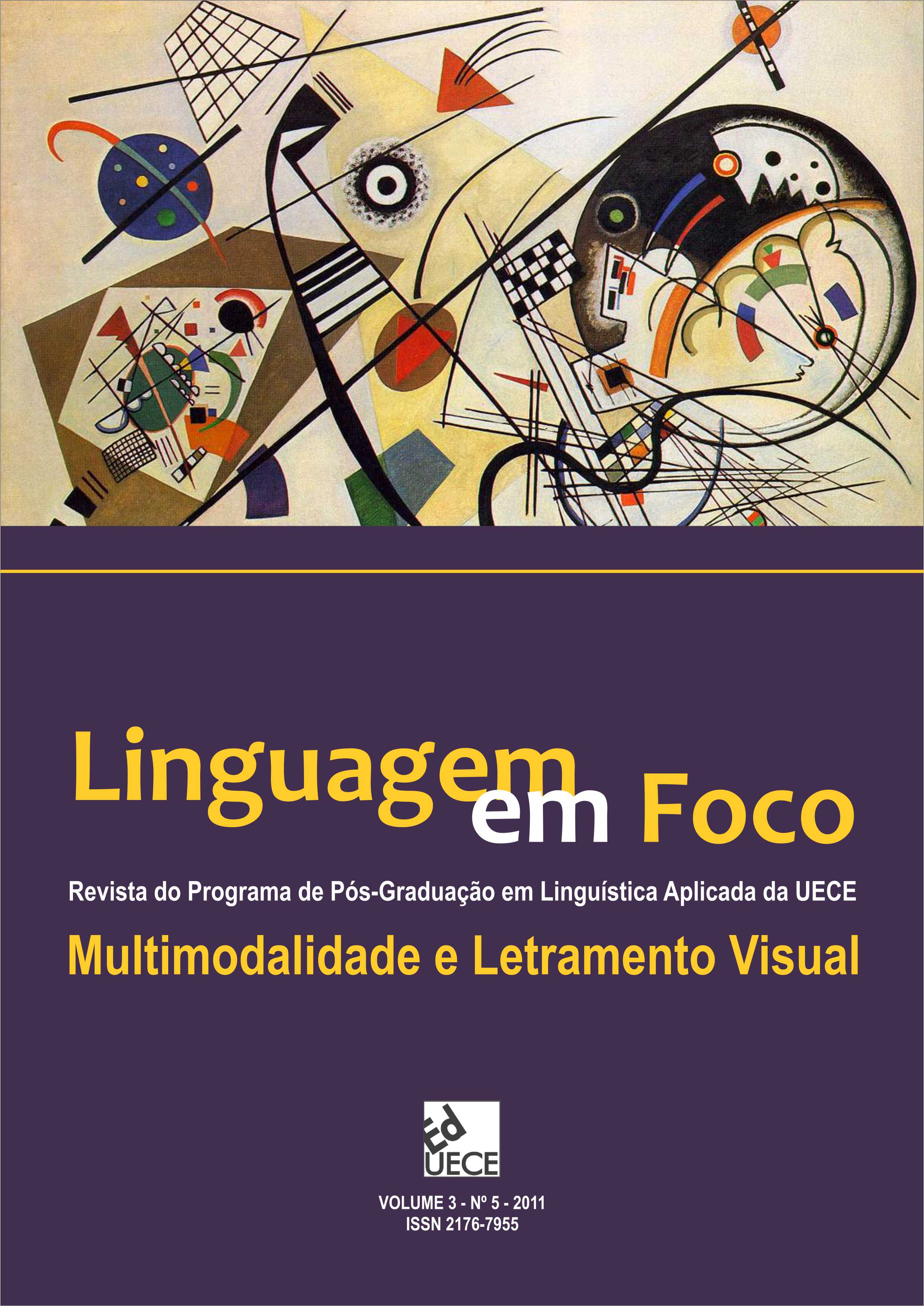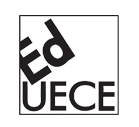MASHING GENRES UP, BREAKING THEM DOWN: LITERACY IN THE AGE OF COPY-AND-PASTE
Keywords:
Remixagem, Recontextualização, Coesão, ModularidadeAbstract
O trabalho investiga as práticas de construir significados resultantes da ação de copiar e colar. Quando a representação é produzida através da remixagem, a coesão não é mais um dispositivo necessário para a coerência, enquanto os textos são caracterizados pela combinação modular de temas, vozes, modos e gêneros, juntamente com a intertextualidade aumentada, implicitude e as multicamadas de significados. Textos compostos modularmente são cada vez mais frequentes em todos os contextos, modos e gêneros, enquanto os que são estruturados linearmente parecem essencialmente confinados a alguns gêneros escritos acadêmicos e educacionais. Discutimos exemplos de produções de escrita acadêmica dos alunos que revelam a influência das práticas semióticas baseadas em remixagem. As conclusões deste trabalho oferecem insights sobre as implicações para o ensino / aprendizagem de gêneros escritos.
Downloads
References
ADAMI, E.; KRESS, G. The social semiotics of convergent mobile devices: New forms of composition and the transformation of habitus. In: KRESS, G. (Ed.). Multimodality. A social semiotic approach to contemporary communication. London: Routledge, 2010. p.184-197.
ANONYMOUS. Détournement as Negation and Prelude. Internationale Situationniste, v. 3, p. 55-56, 1956. Available at: < http://library.nothingness.org/articles/all/all/display/315 >.
BAKHTIN, M. The Dialogical Imagination. Austin: University of Texas Press, 1981.
BAKHTIN, M. Speech Genres and Other Late Essays. Austin: University of Texas Press., 1986.
BARD, P. Replay Remix. Afterimage, v. 37, n. 1, p. 2-3, 2009. Available at: < http://ebookbrowse.com/adv.php?q=Bard+%22Replay+Remix%22 >.
BARTHES, R. The Death of the Author. In: BARTHES, R. and HEATH (Ed.). New York: Hill and Wang, 1977. p.142-148.
BENNETT, K. Plagiarism reassessed: A culturalist take on academia’s cardinal sin. The European Messenger, v. 20, n. 1, p. 74-77, 2011.
BEYLOT, P. La télévision au miroir. Paris: Editions L’Harmattan, 1998.
BEZEMER, J.; KRESS, G. Changing Text: A Social Semiotic Analysis of Textbooks. Designs for Learning, v. 3, n. 1-2, p. 10-29, 2010.
BOURDIEU, P. Outline of a Theory of Practice. Cambridge: Cambridge University Press, 1977.
BUCKINGHAM, D. Media education goes digital: An introduction. Special Issue of Learning, Media and Technology, v. 32, n. 2, p. 111-119, 2007.
BUCKINGHAM, D. Childhood 2025 and Beyond: Children, Media and Technology. 2008. Available at: < http://www.beyondcurrenthorizons.org.uk/wp-content/uploads/bch_challenge_paper_
childhood_david_buckingham.pdf >.
DIAKOPOULOS, N. et al. The Evolution of Authorship in a Remix Society. ACM HyperText and Hypermedia, 2007. Manchester, UK.
DOMÈNECH, R. Political satire in Italy: a successful television genre. Quaderns del CAC, v. 27, p. 71-78, 2007.
DUFF, M. Italians find voice and punish Silvio Berlusconi. BBC News Europe 2011.
DYER, R. Pastiche. London/New York: Routledge, 2007.
ECO, U. Sei passeggiate nei boschi narrativi. Milano: Bompiani, 1994.
ERSTAD, O.; GILJE, Ø.; DE LANGE, T. Re-mixing multimodal resources: Multiliteracies and digital production in Norwegian media education. Learning, Media and Technology, v. 32, n. 2, p. 183-198, 2007.
FAIRCLOUGH, N. Analysing Discourse; Textual Analysis For Social Research. London: Routledge, 2003.
GREENBERG, C. Collage. In: GREENBERG, C. (Ed.). Art and Culture: Critical Essays. Boston: Beacon Press, 1961. p.70-83.
HALLIDAY, M. A. K.; HASAN, R. Cohesion in English. Harlow: Longman, 1976.
JACKSON, M. H. Fluidity, promiscuity, and mash-ups: New concepts for the study of mobility and communication. Communication Monographs, v. 74, n. 3, p. 408-413, 2007. Available at: <
http://coms191spring2009.wikispaces.com/file/view/Phan+San+-+Fluidity,+Promiscuity,+and+Mash-Ups.pdf >.
JENKINS, H. Convergence Culture: Where Old and New Media Collide. New York: New York University Press, 2006a.
JENKINS, H. Learning by remixing. 2006b. Available at: < http://www.pbs.org/mediashift/2006/07/learning_by_remixing.html >.
JENKINS, H. What is Remix Culture?: An Interview with Total Recut’s Owen Gallagher (Part One). 2008. Available at: < http://www.henryjenkins.org/2008/06/interview_with_total_remixs_ow.html >.
JENKINS, H. DIY Video 2010: Political Remix (Part One). 2010. Available at: < http://henryjenkins.org/2010/11/political_remix_video_can_empo.html >.
KNOBEL, M.; LANKSHEAR, C. Remix: The Art and Craft of Endless Hybridization. Journal of Adolescent & Adult Literacy, v. 52, n. 1, p. 22–33, 2008.
KRESS, G. AgainstArbitrariness: The social production of the sign as a foundational issue in critical discourse analysis. Discourse and Society, v. 4, n. 2, p. 169-191, 1993.
KRESS, G.; BEZEMER, J. Writing in a Multimodal World of Representation. In: BEARD, R.; MYHILL, D., et al (Ed.). SAGE Handbook of Writing Development. London: Sage, 2009. p.167- 181.
KRISTEVA, J. Desire in Language: A Semiotic Approach to Literature and Art. Oxford: Blackwell, 1980.
LESSIG, L. Remix. Making Art and Commerce Thrive in the Hybrid Economy. London: Bloomsbury Academic, 2008.
LÉVI-STRAUSS, C. La Pensée Sauvage. Paris: Plon, 1962.
MAGRÌ, A. Di Blob in Blob. Analisi di semiotica comparata. Cinema Tv e Linguaggio del corpo. Roma: Aracne Editrice, 2009.
MANOVICH, L. Remixability and Modularity. 2005. Available at: < www.manovich.net/DOCS/Remix_modular.doc >.
MANOVICH, L. The practice of everyday (media) life. 2008. Available at: < www.manovich.net/DOCS/manovich_social_media.doc >.
MOODY, J. Plagiarism or intertextuality?: Approaches to Teaching EFLAcademic Writing Asian EFL Journal, v. 9, n. 2, 2007. Available at: < http://www.asian-efl-journal.com/June_07_jm.php >.
PARADIS, J.; PETTITT, T.; DONALDSON, P. The Gutenberg Parenthesis: Oral Tradition and Digital Technologies. MIT World video lecture. 1 April 2010. 2010. Available at: <http://mitworld.mit.edu/video/775 >.
PERKEL, D. Copy and paste literacy? Literacy practices in the production of a MySpace profile. In: DROTNER, K.;JENSEN, H. S., et al (Ed.). Informal Learning and Digital Media: Constructions, Contexts, Consequences. Newcastle, UK: Cambridge Scholars Press, 2006. p.203-224.
PORCELLI, F. Schegge. La Tv dopo la Tv. Milano: Il Saggiatore, 2007.
PRECKEL, A. Zapping als Fernsehkritik. Die italienische Telecollage Blob. Berlin: Avinus Verlag, 2008.
SAUSSURE, F. D. Cours de linguistique générale. Paris: Payot, 1916/1931.
STALD, G. Mobile identity: youth, identity, and mobile communication media. In: BUCKINGHAM, D. (Ed.). Youth, Identity, and Digital Media. Cambridge, MA: MIT Press, 2008. p.143-164.
SWEENEY, K. Transmedia Remix. Afterimage, v. 38, n. 3, p. 2-3, 2010.
TRUPE, A. Academic Literacy in a Wired World: Redefining Genres for College Writing Courses. Kairos. 7 2002.
VAN DIJK, T. A. Macrostructures. Hillsdale, NJ: Erlbaum, 1980.
VILLANO, M. Taking the work out of homework. T H E Journal, v. 33, n. 15, p. 24-30, 2006.
Downloads
Published
How to Cite
Issue
Section
License
Copyright (c) 2019 Elisabetta Adami

This work is licensed under a Creative Commons Attribution 4.0 International License.
Authors who publish in Linguagem em Foco Scientific Journal agree to the following terms:
- Authors retain the copyright and grant the journal the right of first publication. The articles are simultaneously licensed under the Creative Commons Attribution License which allows sharing the work with an acknowledgement of its authorship and initial publication in this journal.
- The concepts issued in signed articles are the absolute and exclusive responsibility of their authors. Therefore, we request a Statement of Copyright, which must be submitted with the manuscript as a Supplementary Document.
- Authors are authorized to make the version of the text published in Linguagem em Foco Scientific Journal available in institutional repositories or other academic work distribution platforms (ex. ResearchGate, Academia.edu).

























